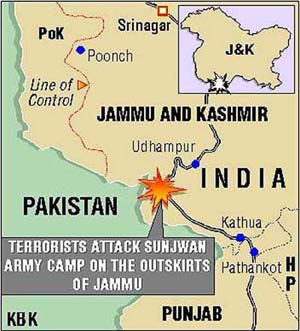7667766266
enquiry@shankarias.in
Why in news?
The Sunjwan Army camp near Chenni in Jammu was recently attacked suspectedly by Jaish-e-Mohammed (JeM) militants.
What happened?

Is this new?
What is the perpetual problem?
What were the responses?
What should be done?
Source: Indian Express